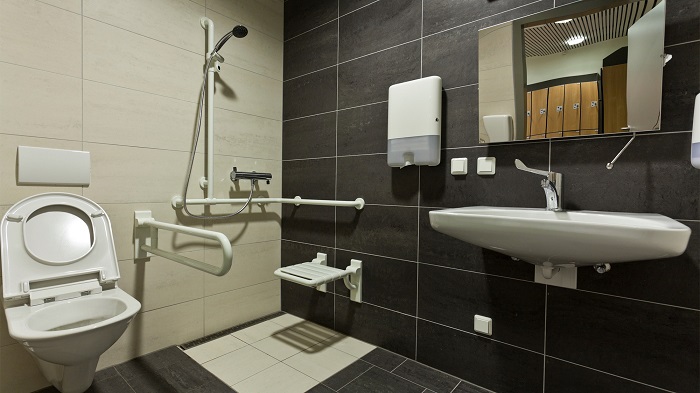Using the bathroom is something everyone wants to do privately and independently. However, it is not that easy for people with mobility problems. For these people, you must find solutions that will facilitate the process. Generally, these solutions refer to the approach to certain tasks, using special equipment or altering the home environment. It is even harder when people with a certain disability are out and about and have to use the bathroom. So, how can you help your loved one who experiences such difficulties to go through all of it in an easier way? Take a look at these steps to collect all the information you need.
Step 1: Take Safety Precautions
First of all, you need to realise that safety is a major concern and you have to take some precautions in advance so that the person in question can be safe and protected. Firstly, help them understand that they need to give themselves enough time and avoid rushing. Also, the way to the bathroom must be illuminated with adequate lighting so that unwanted slips and falls are avoided. Another thing is to make sure that there are fit grab rails so that the person doesn’t feel like they need to hold on to the toilet roll holder or the washbasin. Furthermore, everything needs to be within reach. And last but not least, they shouldn’t lock the door because in case of accidental falls these people will be in need of help. Or, if they feel they need privacy that involves locking, then they can use a lock that can be opened from the outside. An outward opening door can also provide better access during an emergency if the person falls behind the door.
Step 2: Choose the Right Equipment
There are different categories of equipment when it comes to having a little help in the bathroom. Firstly, there is the equipment that helps the person with a disability to sit on the toilet seat and then get up easily. Such type of disabled bathroom equipment is the fitting grab rails or rail systems, the toilet frame, the raised toilet seats and the high seat toilets. It would be even better if these have adjustable properties.
Another category of disabled bathroom equipment are the items used for improving stability. This includes back support, backrest and over-toilet chairs. Having a convenient way to maintain good posture is important if the person has poor balance. If that’s the case, they’ll need to place the feet flat on the floor for a solid base and use padded seats which can provide a degree of compression under the buttocks.
Furthermore, equipment for personal cleansing is a must. Personal cleansing should be a personal and individual task which should be done independently whenever and wherever possible. The little, but oh so important thing that can help out regarding this are: bottom wipers, portable bidet bowls, add-on bidets, combined toilet/bidets and flush controls.
Step 3: Using the Bathroom When Out and About
In this case, planning in advance is all that matters. So, using the toilet at home before leaving the house is the first thing to (if possible at the time). Then, the choice of clothes should be pieces that are easy to manage. Finally, if travelling to a particular facility, you should know beforehand whether the disabled person can use the bathroom there and if not, you’ll need to carry a portable urinal for emergencies.













